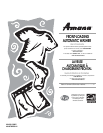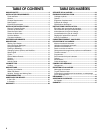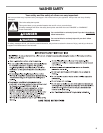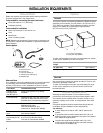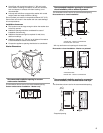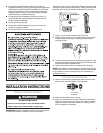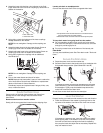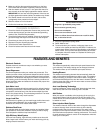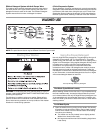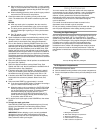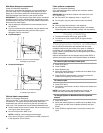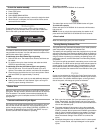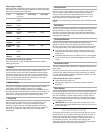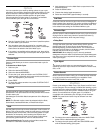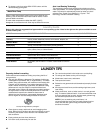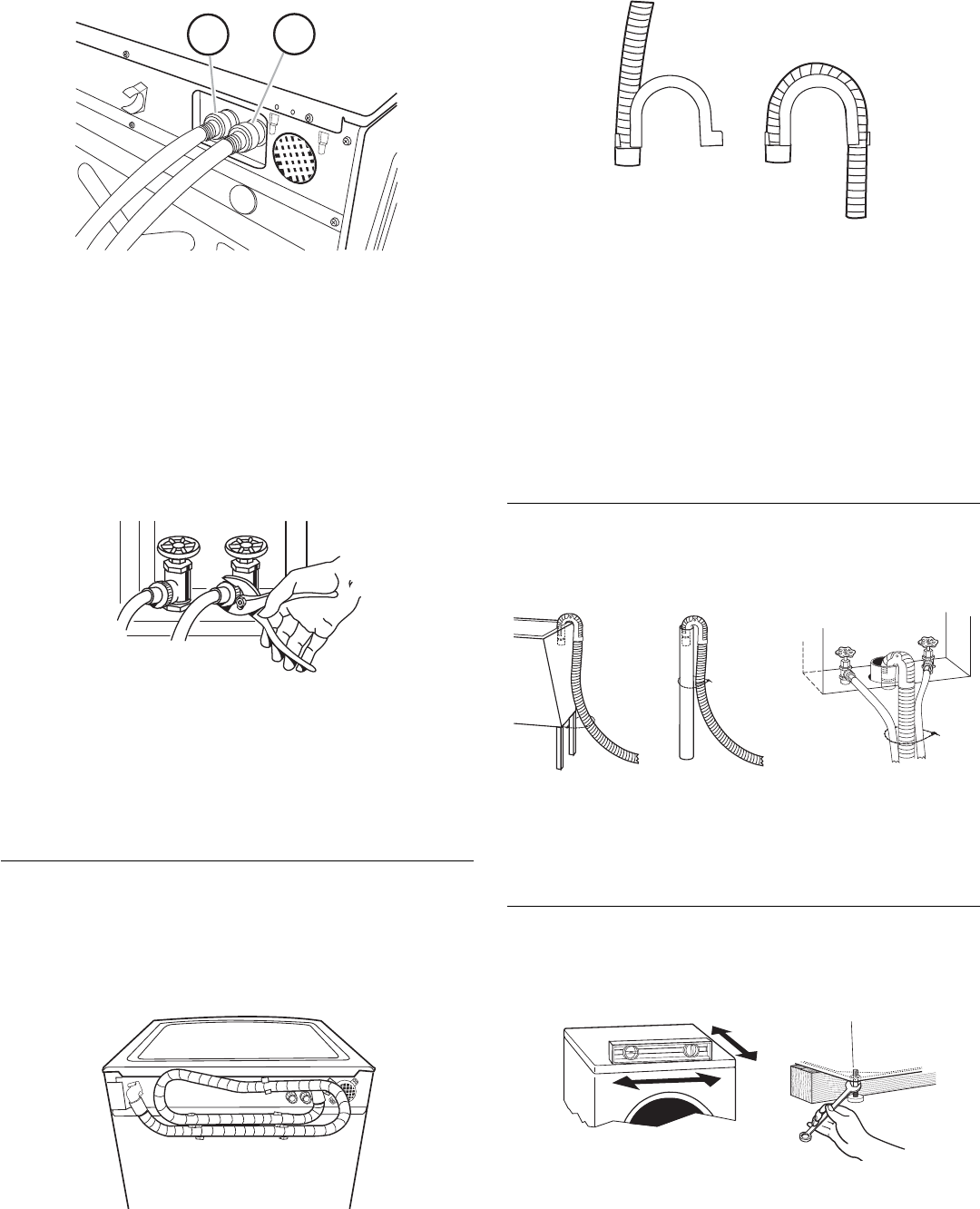
8
4. Attach the hose with the blue color indicator to the Cold
(right) water inlet valve. Screw on coupling by hand until it is
seated on the washer.
5. Using pliers, check the tightness of the hose couplings
already attached to the washer.
NOTE: Do not overtighten. Damage to the coupling can
result.
6. Attach hot water hose to the hot water faucet. Screw on
coupling by hand until it is seated on the washer.
7. Attach cold water hose to the cold water faucet. Screw on
coupling by hand until it is seated on the washer.
8. Using pliers, tighten the couplings with an additional
two-thirds turn.
NOTE: Do not overtighten. Damage to the coupling can
result.
9. Turn on the water faucets and check for leaks.
NOTE: Replace inlet hoses after 5 years of use to reduce the
risk of hose failure. Record hose installation or replacement
dates on the hoses for future reference.
Periodically inspect and replace hoses if bulges, kinks, cuts,
wear, or leaks are found.
Route the Drain Hose
Proper routing of the drain hose protects your floors from
damage due to water leakage. Read and follow these
instructions.
Remove drain hose from washer cabinet
Gently pull the corrugated drain hose from the shipping clips.
Laundry tub drain or standpipe drain
Connect the drain hose form to the corrugated drain hose.
To keep drain water from going back into the washer:
■ Do not straighten the drain hose, and do not force excess
drain hose into standpipe. Hose should be secure, but loose
enough to provide a gap for air.
■ Do not lay excess hose on the bottom of the laundry tub.
Floor drain
You may need additional parts. See Floor drain under “Tools and
Parts.”
Secure the Drain Hose
1. Drape the power cord over the washer top.
2. Secure the drain hose to the laundry tub leg or standpipe with
the beaded strap provided. (See illustrations A and B.)
If the washer faucets and the drain standpipe are recessed
(see illustration C), put the hooked end of the drain hose in
the standpipe. Tightly wrap the beaded strap around the
water inlet hoses and the drain hose.
Do not force excess drain hose into the standpipe.
Level the Washer
Properly leveling your washer avoids excessive noise and vibration.
1. Check the levelness of the washer by placing a level on the
top edge of the washer, first side to side, then front to back.
If the washer is against a wall, move the washer out slightly
before tipping back. If the washer is not level, first prop the
front with a wood block and adjust the feet as necessary;
then prop the back and adjust feet as necessary. Repeat this
step until washer is level.
H.Hot water inlet
C.Cold water inlet
H
C
A.Snap either end of the drain hose form to the drain hose at
the point where the corrugation begins.
B.Bend drain hose over drain hose form and snap into place.
A B
A BC



